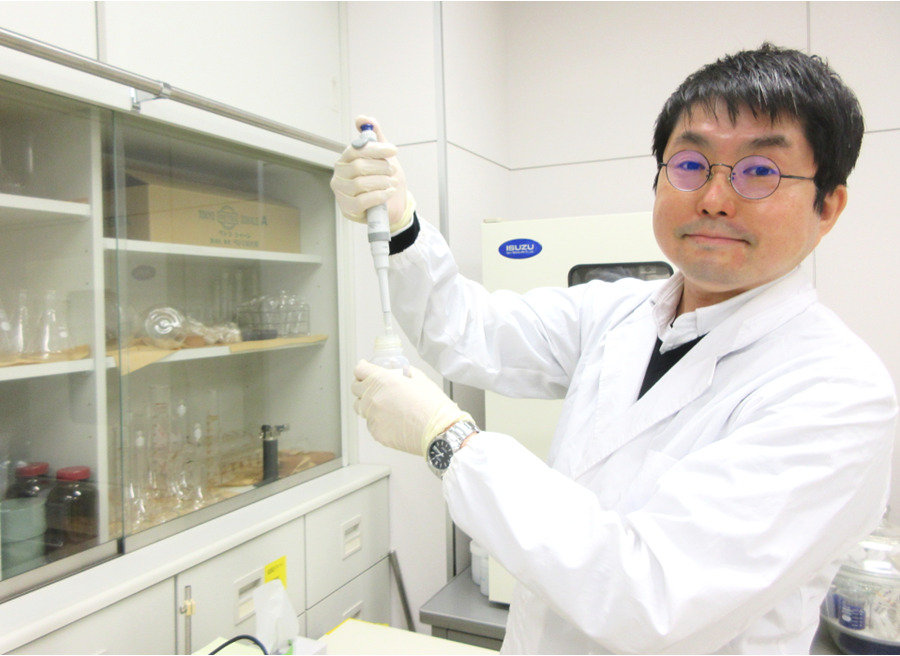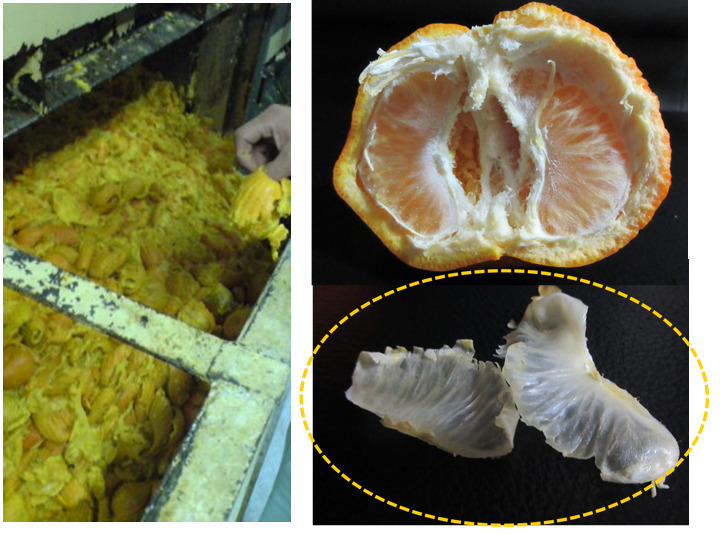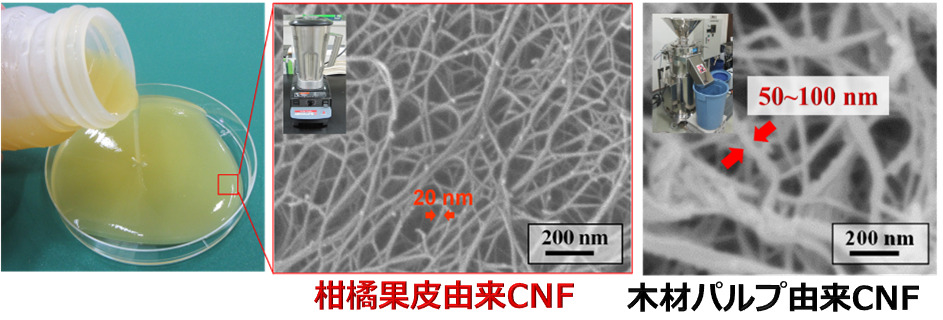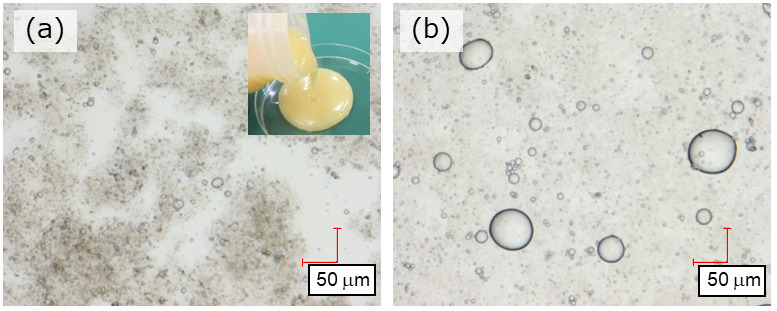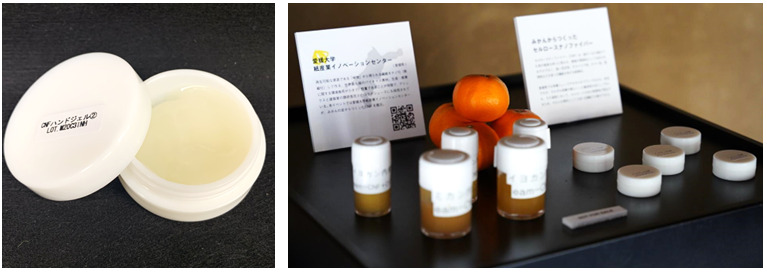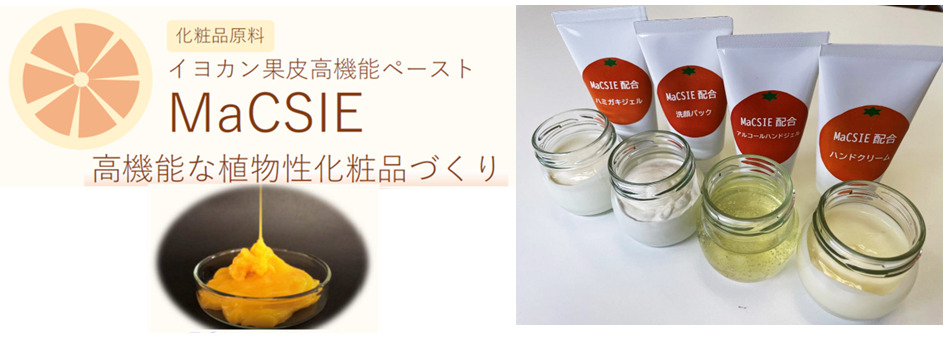Revitalizing local industry with nanofibers made from biomass in Ehime!
※The content is current at the time of writing.
Characterization and Application Development of Citrus Peel Cellulose Nanofibers
Research Overview
Cellulose nanofiber (CNF) is an extremely fine cellulose fiber with a width of 1/1000 to 1/3000 of a hair, and is a new material derived from plant biomass that has many functions.
Ehime Prefecture is famous as a citrus kingdom, but the citrus cultivation and fruit processing processes generate cellulose-containing waste. For example, about 18,000 tons of residue after citrus juice squeezing is generated annually in Ehime, and about 30% of this is disposed of as industrial waste, which requires effective utilization. Currently, wood pulp is the main raw material for CNF, but for some applications, such as food and cosmetics, a safe raw material is desirable, and citrus peels are considered suitable.
We have established a mild and simple CNF preparation method using pectinase enzyme from citrus juice residue (citrus peel). Although our results published in the paper were not directly used, citrus peel CNF and cosmetics using it were commercialized by a company in Ehime Prefecture in 2021 through an industry-government-academia collaboration project in which we participated.
Research Features
Citrus peel CNF has four major characteristics: (1) easy accumulation of raw materials, (2) easy nano-assembly, (3) high emulsification capacity, and (4) high gelatinization capacity.
(1) (2) is the characteristics of the raw material. The product uses residues (fruit peels) discharged from the citrus juice production process (Figure 1). Since it is made from industrial waste that was originally disposed of at a cost, it is low-cost and already economically viable as it is accumulated at the factory, thus reducing the cost and energy associated with transportation. Second, compared to wood pulp, which has been studied extensively as a raw material for CNF, the fibers contained in citrus peels are finer and more easily nanofibered (miniaturized), so the processing process is relatively energy-efficient. We have also found an easy way to produce CNF by using the enzyme pectinase, which is also used in food processing, as a pretreatment to obtain nanofibers (Figure 2).
(3) (4) is a property of citrus peel CNFs that we have discovered. Normally, water and oil do not mix, but CNFs have the effect of dispersing and retaining oil in water as tiny oil droplets (called emulsification). Moreover, citrus peel CNFs retain oil as tiny oil droplets in water for a longer period of time than wood pulp-derived CNFs, making them a highly emulsifiable material (Figure 3).
This property was utilized in a prototype hand gel emulsified with moisturizing oil, which was introduced at an exhibition (Fig. 4). Although the university’s own prototype of this product was not commercialized, the aforementioned industry-government-academia collaboration project has commercialized cosmetics containing citrus peel CNF using the same properties (Fig. 5).
We cannot show you the details of the gelling ability of (4) because it is currently being studied with students from the Faculty of Collaborative Regional Innovation, Ehime University, but we have confirmed its effectiveness in protecting lactic acid bacteria from stomach acidity. So far, there has been no research on CNFs used to take advantage of beneficial microorganisms. We are working on research to utilize beneficial microorganisms using safe citrus peel CNF prepared from raw materials unique to Ehime.
Research Attraction
CNF made from citrus peel, which is a biomass unique to Ehime Prefecture, has different characteristics from wood pulp-derived CNF, which has been studied extensively, and is expected to lead to the development of new applications. As a researcher, I am always happy when I devise (or discover) a new theme, such as the discovery and application of the emulsifying and gelling properties of citrus peel CNFs, and when my experiments yield results that are in line with my hypothesis (even more so when the results are unexpected). Although at first glance it may seem a modest and small effort, that moment is a “world first” that only we can confirm.
In the industry-government-academia collaboration project mentioned earlier, university researchers such as ourselves were conducting research on the effective use of citrus peel with the attitude of creating “1” from “0” and publishing papers and books on the subject. I was asked to be a member of the project. This project was organized by Ehime Prefecture by connecting paper companies, universities, and national research institutes in the prefecture. The results of our presentation did not directly lead to commercialization, but through the collaboration of various parties involved, individual results were directly or indirectly fused together and developed from “1” to “10” to “100”, It was a pleasure to participate in the event and to see how the individual achievements developed from “1” to “10” and then to “100” through direct or indirect fusions by the collaboration of various parties involved, leading to practical applications.
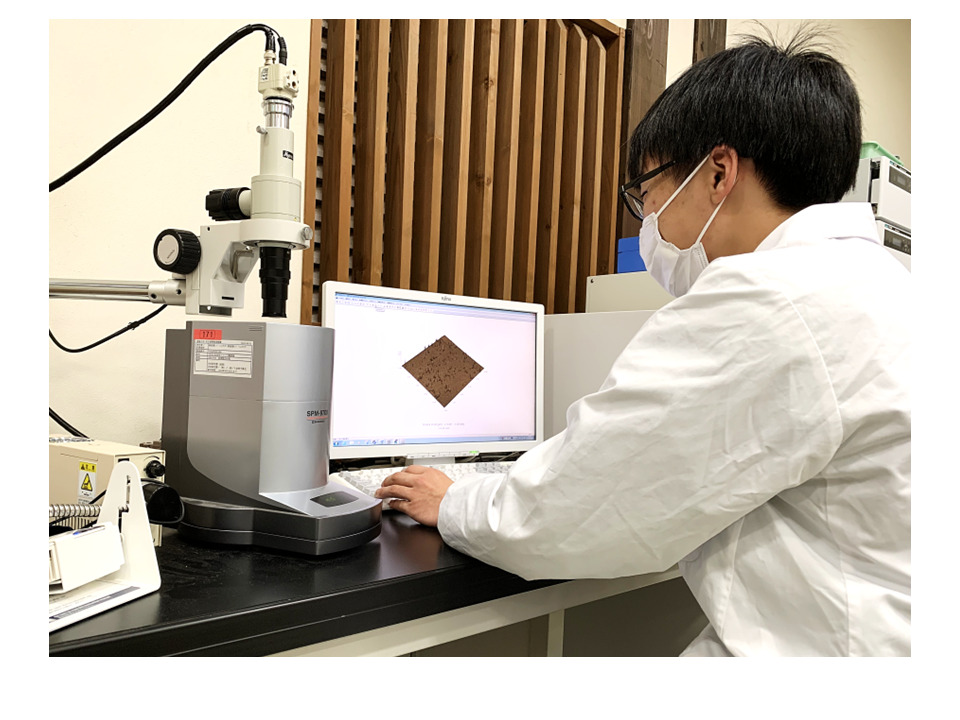
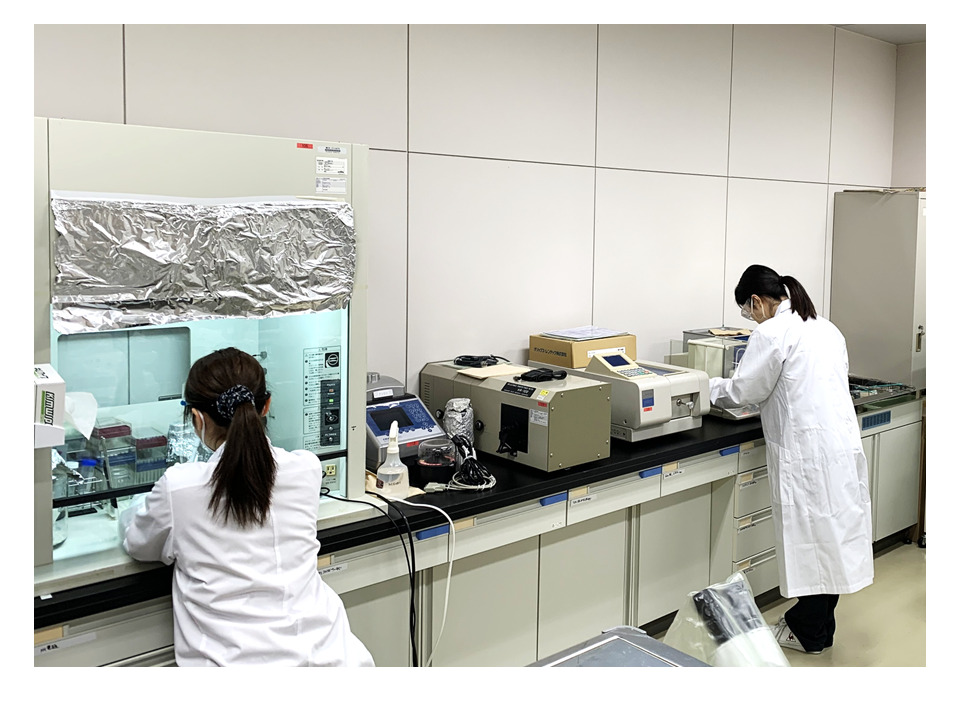
Future Outlook
While there have been a variety of application developments in the field of research on CNFs, few studies have been related to microorganisms. Currently, we are working on the development of microbial materials focusing on the gelling ability of citrus peel CNFs. Lactobacillus acidophilus, a type of probiotic, has an immunostimulating effect even when dead, but it is expected to have even more beneficial effects when delivered to the intestines as live bacteria. However, some types of lactobacilli are almost completely killed by stomach acid, so they need to be protected. Citrus peel CNFs are made from raw materials that have been used in food, are relatively safe, and have good gelling ability, so there is a possibility that they can be used as a protective material for probiotics. We aim to conduct research that will ultimately benefit people and local industries by using microorganisms with CNF obtained through the effective use of local biomass.
Message to those who are interested in this research
Utilization of plant biomass, which fixes CO2 through photosynthesis, can be one of the means to achieve several of the Sustainable Development Goals (SDGs) set by the United Nations General Assembly in 2015.
The paper industry, for example, is an industry that utilizes plant biomass in the form of wood. In recent years, due to factors such as digitalization and the declining birthrate, which is directly related to the declining population, paper consumption has been falling, and there is a need to create a new biomass utilization industry that includes uses other than paper. One of the nation’s leading paper companies’ efforts to commercialize citrus peel CNF is a good example.
Our research aims to make effective use of local biomass, converting plant biomass into useful materials and substances, such as CNF, using biological functions such as enzymes and microorganisms, and enhancing biological functions using them. Why don’t you join us in our research to create a new biomass industry by effectively utilizing local plant biomass?


